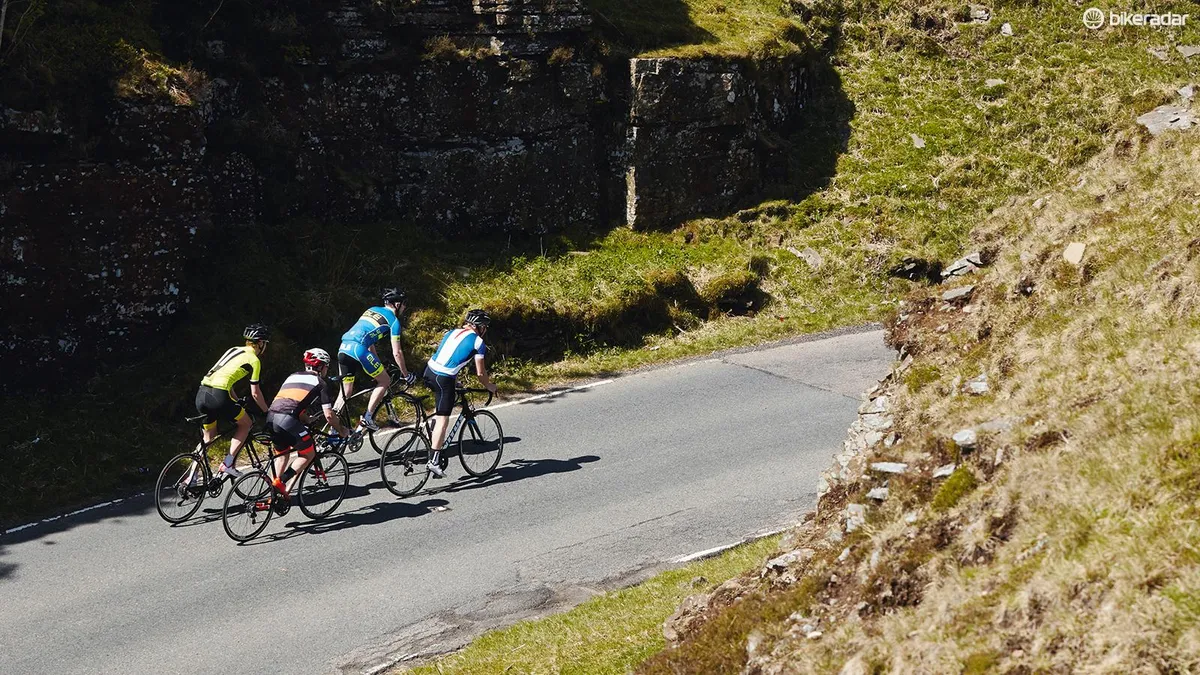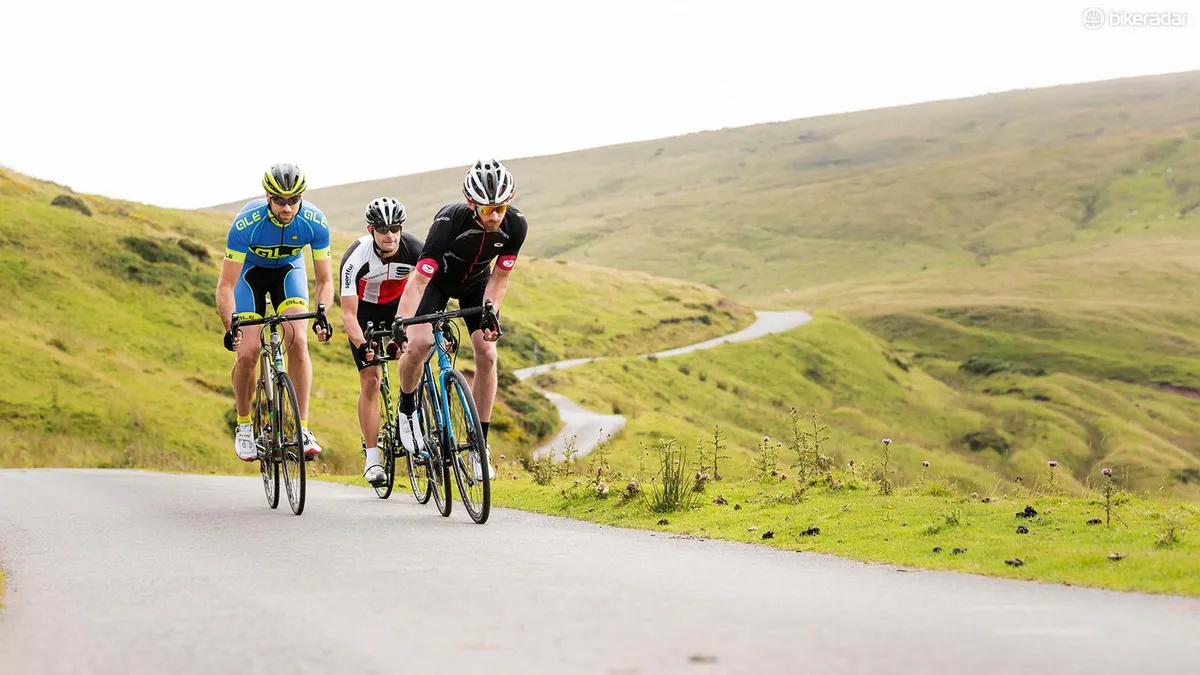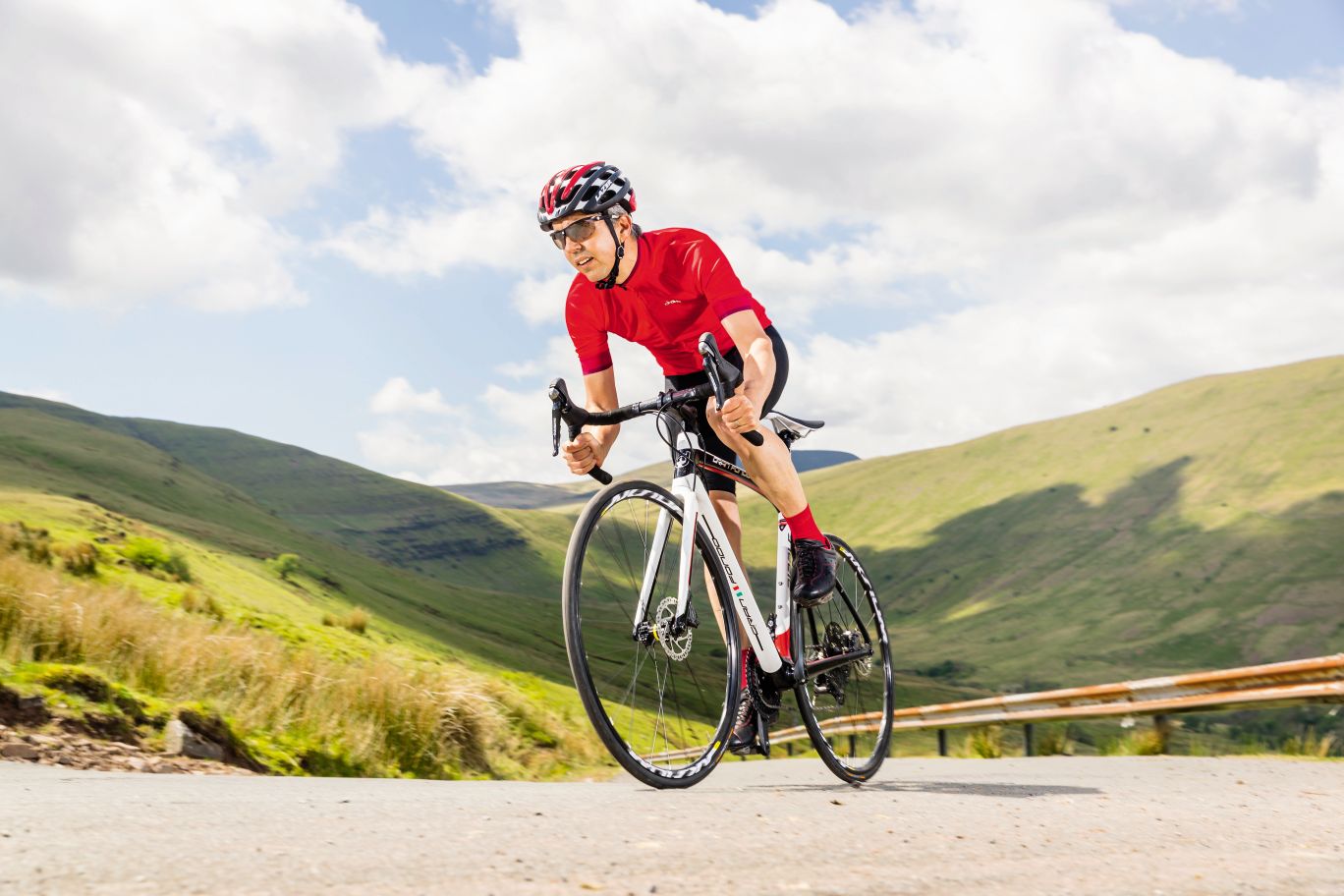Everyone was a beginner once, and everyone made mistakes, so where better to look for advice than pro riders and those who work with them to find out how cycling newcomers can avoid the pitfalls...
- UK readers: can you help us get more people on bikes? Whether you’re a keen cyclist or a complete beginner, we’d love you to get involved in our Get Britain Riding campaign, in association with B’Twin. Click here to sign up!
1. Training
Courtney Rowe: lead coach at Rowe & King
“My advice to anyone starting out is to find a quality group in your area that you can ride with. One that started out at entry-level but has moved on, one that will understand where you’re at and encourage you to progress.
Don’t bite off more than you can chew, instead build up your riding steadily. This will also help to keep your morale intact
“The other thing would be to find someone you have faith in and take only their advice, so you’re just taking advice from one person. When you get into a club or large group environment you’ll find that everybody will have an opinion and will want to share it with you, and many will only have been riding a year or two themselves.
"Instead of listening to it all — ‘move your saddle up’, ‘move it down’, ‘move it forward’ — find someone you trust and you have faith that they know what they are talking about.
“I liken it to going to see five doctors if you’re ill, and getting five different prescriptions. Any of those five prescriptions will make you better, but taking all five of them will kill you.
“In your first year you don’t need a coach, but you do need guidance and I stress that you should get that guidance from just one person.”
Eddie Fletcher: lead sports scientist with Wattbike
“High intensity training is, essentially, using as much energy as you can during exercise in a short time.
“It’s currently all the rage in the fitness industry in the HIIT format — High Intensity Interval Training — where you push yourself to the limits for a short time, then drop off to a comfortable effort level, return to pushing to the limit, and so on. It may be good for burning calories for weight loss in a gym, but for a cyclist with an eye on overall performance it doesn’t do the job.
“There is a place for some high intensity training, but not in isolation — it needs to be part of a well-balanced training plan, otherwise it can be both limiting in training effectiveness, and detrimental to overall wellbeing.
“By doing only high intensity workouts, the body won’t develop beyond a certain point. And if your high intensity training isn’t balanced with the correct mix of lower intensity, longer duration training, and suitable recovery periods, it will lead to excess fatigue and ultimately reduced performance, illness and injury.”
Alex Dowsett: pro rider with Movistar
“Don’t bite off more than you can chew, instead build up your riding steadily. This will also help to keep your morale intact. Don’t imagine you can enter an elite race when you’ve only been on a couple of rides. Set small goals and as you tick them off it will keep your confidence up.
“When I was young I used to follow the training advice of my coach, until one week he went on holiday and someone else told me about a 100-mile sportive. I was 13 but I went for it. About two-thirds of the way through I was super-tired and losing concentration. At that point I touched wheels, went down and took about 10 other riders with me. I learnt the hard way about taking on too much too soon.
“The other thing that can happen is going out with too fast a group too early and getting shelled out the back. It’s no fun, and it’s a lonely ride home. Our club, Cyclism, and all good ones will have groups for all abilities. As you progress you can move through the groups and by the time you join the fast group, if that’s what you want, you’ll be ready.”
2. Maintenance
Neil Holman: owner and mechanic at George Halls Cycle Centre
“Learn how to change an inner tube and use a patch kit to repair a tube if you’re out of spares. A puncture is the most common problem and many people struggle with it, especially in the rear wheel. They see all those gears and get scared. Last year I was out with my mountain bike club and came across two cyclists watching a YouTube video on how to fit an inner tube. Practice at home and save yourself time when it does happen.”
How to fix a road bike puncture
How to fix a mountain bike puncture
“Get clued-up on mending a chain. If you snap a chain and haven’t got the tool to fix it, it can be a long walk home. Even if you put your rear derailleur in the wheel, if you can shorten the chain, at least you can still ride the bike and get home singlespeed.”
How to fix a chain
3. Hydration
Dr James Morton: nutritionist with Team Sky
“The general rule to avoid dehydration when cycling is to drink 500–800ml of fluid per hour — depending on the weather. But when starting out you should follow your thirst and drink as you feel the need.
"New riders also need to practice re-hydration after exercise. Keep drinking when you’ve finished your ride and get into the habit of weighing yourself before and after exercise to see how much fluid you’re losing.”
4. Group riding

Manners: Nose blowing, eating, drinking and chatting are best saved for further back in the group, not out front. Remember this and others will respect you more.
How close is too close?: If you’re riding with someone you regularly draft, your front tyre needs to be inches from their back tyre to get the most benefit. During sportives, it is where large groups ride close together that accidents often happen.
On the wheel: Should you find yourself in the middle of a strong, smooth chaingang enjoy the rest, but don’t lose concentration. Ride slightly offset, so you can keep an eye out for problems further up the road.
On the front: Pedal smoothly and efficiently on the flat, and if you do have to get out of the saddle, try not to shoot your bike backwards as you stand up.
Know your limits: If the group starts pulling away in a sportive, conserve energy and wait for the next group to come through.
Steady as she goes: One of the biggest mistakes people make is overreacting to hazards. Remember that there are people riding close to you; brake softly and don’t make sudden movements. The further back you are in a chaingang, the less time you’ll have to react.
Sitting up and moving: When you’ve done your turn on the front, don’t sit up. Keep your pace while you pull out. That way the rider on your wheel can get a pull. Once out of the way, you can sit up.
5. Health
Neil Holman: owner and mechanic at George Halls Cycle Centre
“Learn basic first aid. If you do have a mechanical failure when on the bike, 50 percent of the time it results in injury, whether it’s a grazed knee, broken limb or concussion.
"On our mountain bike rides we had a season of accidents, everything from a snapped seatpost that lacerated the back of a rider’s leg to another rider being knocked unconscious after a tree-hugging fall. The club paid for a professional first aider to run a course for us so we would know what to do. It’s come in very handy both on rides and during our day-to-day living.”
6. Nutrition
Charlotte Kennedy: Etixx sports nutritionist
“Everyone knows how important carbohydrates are for energy, and while this is absolutely right, it is possible to overeat on carbohydrates. This is especially true in the build-up to an event when endurance athletes will most likely ‘carbo-load’.
“Leading up to an event, you should definitely increase the amount of carbohydrate you are eating, but don’t feel you need to eat as much as you possibly can. Simply having a portion of carbohydrate with every meal and some carbohydrate-based snacks is fine.
“The same goes for your everyday diet. When a new athlete takes up endurance sport it’s not uncommon to think they need to eat loads of carbohydrate for fuel. While it is important to increase carbohydrate intake in line with your training demands, novice riders should experiment with carbohydrate intake to find the right amount that works for them.
“Eat enough so that you feel energised, but not too much that you’re left feeling bloated and heavy! Controlling carbohydrate intake can help prevent weight gain, which optimises power-to weight-ratio and can really help your performance.”
7. Preparation

David Millar: ex-pro and ITV cycling co-commentator
“If you’re going to go on a proper bike ride you’re going to reach places where you have no phone signal, so be prepared for that. Go full-on boy scout. I always have two spare tubes in my saddle bag, small CO2 gas canisters, a pump and a multi-tool.”
If you get into riding 300km and more you may need even more than that, but for most training rides and sportives Millar’s essentials should get you out of trouble.
Charlotte Kennedy: Etixx sports nutritionist
“When you take up any endurance sport it’s important to learn about how to fuel yourself. Many novice riders will tend to go out on long rides without being properly prepared by taking food and drink with them.
“Planning to be self-sufficient is essential. For rides longer than 90 minutes, you should carry enough food to avoid bonking — running out of energy and being unable to carry on. And always have enough fluid to keep you hydrated along the way.
“Novice riders should aim to eat 30–60g of carbohydrate per hour of exercise. This may require a bit of experimentation. Below is a list of products that contain 30g of carbohydrate; two of these every hour would be a great start.”
- Energy bar
- Six Jelly Babies
- Five dates
- Half a jam sandwich made with white bread
- Isotonic powder mixed with 500ml of water
- Energy gel
8. Recovery
Dr James Morton & Charlotte Kennedy
JM: “While the emphasis on carb intake for endurance cyclists is important, not all new riders appreciate the role of protein in facilitating recovery. It’s not solely a food for those looking to bulk up; it’s also a vital element if you’re looking to get leaner.
"Consuming high-quality protein during the day (20–30g at three-hour intervals) and after training and races provides the necessary building blocks (amino acids) to help stimulate muscle recovery.”
CK: “Recovery from exercise is so important. Even if you’re trying to create a calorie deficit, don’t compromise on your recovery meal. Following an intense or long session, aim to get in some nutrients, which should contain carbohydrate and protein, as soon as possible. A great way to do this is a recovery drink — quick to make and ideal for novice riders.
“Following this recovery, you should eat a full recovery meal around two hours after finishing your session — the recovery meal is a crucial time to take in high-quality nutrients. It should contain carbohydrates to replenish fuel stores, protein to stimulate muscle growth and repair, and vegetables to boost your immune system.
"A great example would be sweet potato with salmon and leafy greens or a baked potato with minced beef and side salad. It’s important not to forget or compromise this recovery meal — it will only leave you feeling fatigued for your next session and can prevent you from making the performance gains you want."
What advice would you give someone starting out in cycling? Let us know in the comments below.

